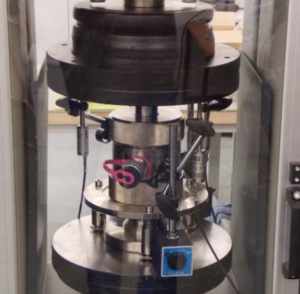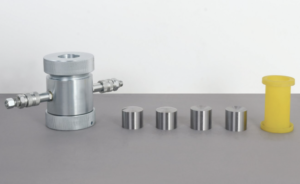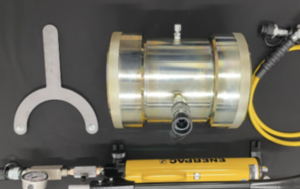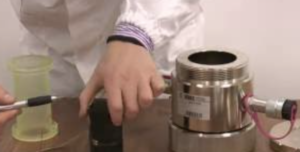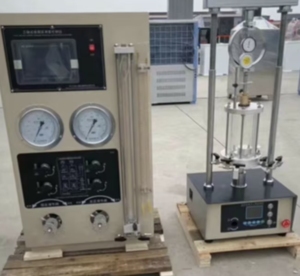How Can Geotechnical Triaxial Tests Optimize Foundation Design in Industry?
Geotechnical triaxial tests1 play a pivotal role in modern foundation design2 by providing detailed insights into soil behavior3 under simulated field stresses. These tests yield critical parameters that help engineers design safer and more efficient foundations. In this article, we discuss how triaxial test data optimizes foundation design2, highlighting key test parameters, design integration methods, and future industry benefits.
Introduction to Triaxial Testing for Foundation Design
Triaxial testing4 is a laboratory method where a cylindrical soil specimen is subjected to controlled axial and confining pressures. For foundation design5, these tests simulate in-situ stress conditions and reveal how the soil will respond under the loads imposed by structures. Key aspects include:
- Simulating Field Conditions: The test replicates both undrained and drained conditions, allowing engineers to evaluate soil behavior under immediate and long-term loading.
- Determining Soil Strength: By monitoring stress–strain responses, the test helps establish the soil’s shear strength and deformation characteristics.
- Informing Design Decisions: Data obtained are used to calculate bearing capacity, settlement potential, and overall stability, which are essential for designing robust foundations.
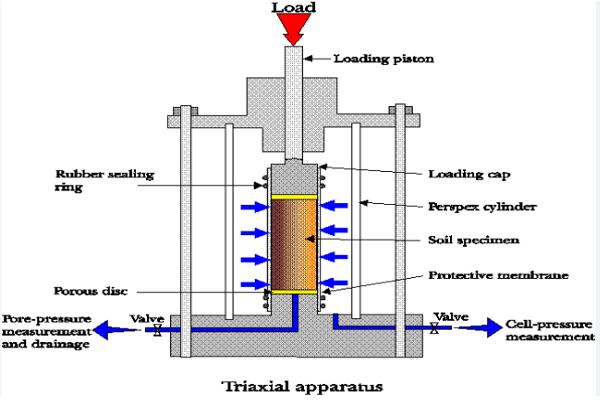
Critical Parameters for Load-Bearing Evaluation
Triaxial tests provide several critical parameters that are fundamental in evaluating a soil’s load-bearing capacity:
- Undrained Shear Strength (sₜu): Essential for short-term loading conditions, especially in clayey soils where rapid loading occurs.
- Effective Stress Parameters (c′ and φ′): Derived from pore pressure measurements, these parameters are used in long-term design, helping to predict soil behavior after consolidation.
- Stress-Strain Relationship: The initial stiffness (modulus of elasticity) and post-peak behavior (strain-softening or hardening) inform design models for expected deformations.
- Pore Water Pressure Development: Understanding how pore pressure evolves during loading is critical for assessing effective stress, which governs soil strength in the field.
These parameters, when accurately measured and analyzed, help engineers determine the appropriate factor of safety and predict settlement and stability of foundation systems.

Integrating Test Data into Design Practices
The transition from laboratory data to practical design involves several key steps:
- Data Analysis and Interpretation: Engineers use stress–strain curves, Mohr circles, and consolidation data to derive the soil’s shear strength, modulus, and effective stress parameters.
- Failure Envelope Construction: Multiple tests under different confining pressures allow the creation of a failure envelope, which is then used to establish the soil’s cohesion (c′) and friction angle (φ′).
- Design Modeling: The derived parameters are integrated into geotechnical models and design software. These models predict foundation performance, including settlement, bearing capacity, and lateral earth pressures.
- Calibration and Verification: Field performance data, such as in-situ tests (SPT, CPT) and post-construction observations, help validate and refine the design parameters obtained from triaxial tests.
This integration ensures that foundation designs are optimized to the specific soil conditions at a site, enhancing safety and reducing construction costs.

Benefits and Future Prospects in the Industry
Using triaxial test data in foundation design offers numerous benefits:
- Enhanced Safety: Accurate soil strength parameters lead to foundations that can reliably support structures, reducing the risk of failure.
- Cost Efficiency: Optimized designs minimize over-engineering and excessive material use, lowering overall project costs.
- Improved Predictability: A detailed understanding of soil behavior under various loading conditions aids in forecasting settlement and deformation.
- Adaptability: With evolving construction methods and increasing complexity in urban projects, triaxial testing offers adaptable data that can be integrated with advanced numerical modeling techniques.
Looking ahead, advances in testing technology—such as automated data acquisition6, improved sensors for pore pressure, and real-time analysis7—are expected to further refine the precision of triaxial tests8. This evolution will continue to enhance the reliability of foundation designs, ensuring that future infrastructures are both safe and economically viable.

Conclusion
Geotechnical triaxial tests are indispensable for optimizing foundation design in modern industry. By accurately determining soil strength parameters, analyzing stress-strain behavior, and integrating these insights into design models, engineers can develop safer and more cost-effective foundation systems. As testing technologies continue to advance, the role of triaxial testing in shaping resilient and efficient infrastructure will only grow stronger.
-
Understanding triaxial tests is essential for grasping soil behavior and improving foundation design. Explore this link for in-depth insights. ↩
-
Foundation design is crucial for safety and efficiency. Discover how geotechnical testing enhances this process by visiting the link. ↩ ↩
-
Exploring soil behavior is vital for effective engineering solutions. Learn more about the factors affecting it through this resource. ↩
-
Understanding Triaxial testing is crucial for engineers to assess soil behavior under load, ensuring safe and effective foundation design. ↩
-
Learning about foundation design best practices can significantly improve construction safety and longevity of structures. ↩
-
Explore this link to understand how automated data acquisition enhances testing technology and improves precision in various applications. ↩
-
Discover the benefits of real-time analysis in testing technology and its impact on accuracy and efficiency in data interpretation. ↩
-
Learn about triaxial tests and their crucial role in ensuring safe and reliable foundation designs for future infrastructures. ↩

